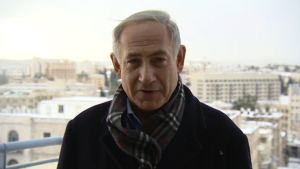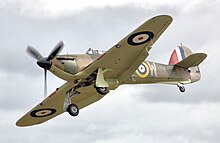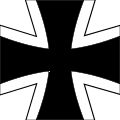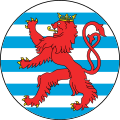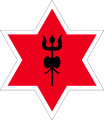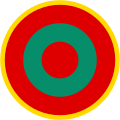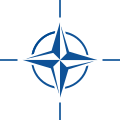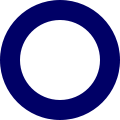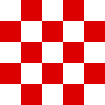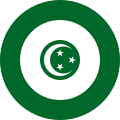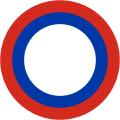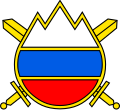Military aircraft insignia are
insignia applied to
military aircraft to identify the
nation or branch of military service to which the aircraft belongs. Many insignia are in the form of a circular
roundel or modified roundel; other shapes such as stars, crosses, squares or triangles are also used.
Insignia are often displayed on the sides of the
fuselage, the upper and lower surfaces of the
wings, as well as on the
fin or
rudder
of an aircraft, although considerable variation can be found amongst
different air arms, and within specific air arms over time.
History
France
The first use of national insignia on military aircraft was before the
First World War by the
French Aéronautique Militaire which mandated the application of roundels in 1912.
[1] The chosen design was the French national
cockade, which consisted of a blue-white-red emblem, going outwards from center to rim, mirroring the colours of the
flag of France. In addition, the
rudders of the aircraft
were painted the same colours in vertical stripes, with the blue
vertical stripe of the tricolors forwardmost. Similar national cockades
were designed and adopted for use as aircraft
roundels by the air forces of other countries, including the
U.S. Army Air Service.
[1]
United Kingdom in the First World War
The British
Royal Flying Corps (RFC) abandoned their original painted
Union Flags because, from a distance, they looked too much like the
Eisernes Kreuz (
Iron Cross) used on German aircraft. The
Royal Naval Air Service used a red-rimmed white circle on their wings for a short period — almost exactly resembling those in simultaneous use by the
neutral predecessors of today's
Royal Danish Air Force
— before both British air arms adopted a roundel resembling the French
one, but with the colours reversed, (red-white-blue from centre to rim),
before the two separate air arms joined to form the
Royal Air Force
on April 1, 1918. This basic design with variations in proportions and
shades has existed in one form or another to this very day.
[1][2]
United States

U.S. Army Signal Corps Curtiss JN-3 biplanes with red star insignia, 1915

A restored
SPAD XIII fighter in American markings, with "reversed" fin flash colors.
The military aviation insignia of both the
United States and
Russia have had interesting "crossovers" early in the 20th century. The initial
US Army Signal Corps aviation insignia used during the Pancho Villa
punitive expedition just before American involvement in World War I
began, used on the vertical tail and wings was a red five-pointed star similar to that of the later
Soviet Union, without a red or white outline border. A tricolor roundel, similar to that used by
Imperial Russia,
but using proportions close to the era's British RFC roundel's colors,
was introduced by the US Army Air Service in February 1918 for
commonality with the other allies, all of whom used such roundels, and
Russia had already dropped out of the war. Even with American aircraft
using British and French style
fin flashes
on the rudders during World War I, the British and French markings were
painted with the blue vertical stripe forwardmost at the hinge line or
leading edge, with red at the rudder's trailing edge — American aircraft
reversed the red and blue vertical fin flash stripes' locations during
the World War I years to avoid confusion. In addition, allegedly like
the Union Jack for the British RFC earlier in the war, the May
1917-adopted red circle-centered white star in a dark blue circular
field for all United States military aircraft was said to potentially
resemble the German
Luftstreitkräfte's Eisernes Kreuz
at a distance, making its use in western Europe a possible hazard.
Contemporary with the U.S. Army Signal Corps' red star, the US Navy was
using an anchor symbol on the rudders of its seaplanes.
As of 19 May 1917 all branches of the military were to use a white
star with a central red circle all in a blue circular field, painted in
the official flag colors.
[1]
In August 1919 the colors were adjusted to the current standards and
the proportions were adjusted slightly so that the centre red circle was
reduced slightly from being 1/3 of the diameter of the blue circular
field, to being bound by the edges of an imaginary pentagram connecting
the inner points of the star. During the
First World War and into the early post war period,
US Marine Corps aircraft often had
the Imperial Russian-style WW I tricolor roundel with an anchor painted on the sides of the fuselage.
In the months after
Pearl Harbor it was realized that the central red circle could be construed as being a Japanese
Hinomaru
from a distance or in poor visibility, and in May 1942 the central red
circle was eliminated. On aircraft in service they were painted over
with white. During November 1942, US forces participated in the Torch
landings and for this a chrome yellow ring (of almost random thickness)
was temporarily added to the outside of the roundel to reduce incidents
of Americans shooting down unfamiliar British aircraft, which could
themselves be distinguished by a similar chrome yellow outline on their
fuselage roundels.
None of these solutions was entirely satisfactory as friendly fire
incidents continued and so the US Government initiated a study and
discovered that the red wasn't the issue since color couldn't be
determined from a distance anyway—but the shape could be. After trying
out several variations including an oblong roundel with two stars, they
arrived at using white bars flanking the sides of the existing roundel,
all with a red outline, which became official in June 1943. This still
wasn't entirely satisfactory and the red was replaced with blue in
September 1943. On US Navy aircraft painted overall in gloss midnight
blue starting in 1944-45, the blue of the roundels was virtually
identical to the background blue color, so the blue portion was
eventually dispensed with and only the white portion of the roundel was
painted on the aircraft.
In January 1947 red bars were added within the existing white bars on both
USN and USAAF aircraft and in September of the same year, the
United States Army Air Forces (USAAF) became an independent service and was renamed the
United States Air Force (USAF), during the timeframe of the passage of the
National Security Act of 1947
by the U.S. Congress that established the independent USAF service. In
1955 the USN would repaint all its aircraft from midnight blue to light
grey over white and would use exactly the same roundel as the USAF
again. Since then there have been some minor variations, mostly having
to do with lo-visibility versions of the star and bars roundel. Air
superiority F-15's eliminated the blue outline in the 1970s, and later
some aircraft replaced the blue with black or a countershaded grey, or
used a stencil to create an outlined version.
United Kingdom and Commonwealth nations
From 1923 onwards, a variant of the British red-white-blue roundel with the white ring omitted has been used on
camouflaged aircraft. During the
Second World War,
the red inner circle of roundels on aircraft based in the Asia-Pacific
region — much like the American roundel's central red circle of pre-1942
vintage had been omitted for similar reasons — was painted white or
light blue, so they would not be confused with the
Hinomaru markings on
Japanese aircraft (still used by the
Japan Self-Defense Forces to this day).
After the
Second World War, the
RAF roundel design was modified by
Commonwealth air forces, with the central red disc replaced with a
maple leaf (
Royal Canadian Air Force),
kangaroo (
Royal Australian Air Force),
kiwi (
Royal New Zealand Air Force), and
springbok (
South African Air Force).
Low-visibility insignia
As early as 1942-43, and again in recent decades, "low-visibility" insignia have increasingly been used on
camouflaged
aircraft. These have subdued, low-contrast colours (often shades of
grey or black) and frequently take the form of stenciled outlines.
Infra-red (heat) seeking
missiles
were found to be able to home in on the markings and so they either had
to be reduced in size or contrast. Previously low visibility markings
were used to increase ambiguity as to whose aircraft it was, and to
avoid compromising the camouflage, all while still complying with
international norms governing recognition markings.
The World War II German
Luftwaffe often used such "low-visibility" versions of their national
Balkenkreuz
insignia from the mid-war period through to V-E Day, omitting the
central black "core" cross and only using the "flanks" of the cross
instead, in either black or white versions.
Fin flashes

Low-visibility Royal Air Force fin flash on the fin of an
Avro Vulcan
In addition to the insignia displayed on the wings and fuselage, a fin flash may also be displayed on the
fin.
[3]
A fin flash often takes the form of vertical or slanted stripes in the
same colours as the main insignia. Alternatively, a national flag may be
used on the fin.
Current insignia of national air forces
-
-
-
-
-
-
-
-
-
-
-
-
-
-
-
-
-
-
-
-
-
-
-
-
-
-
-
-
-
-
-
-
-
-
-
-
-
-
-
-
-
-
-
-
Colombia
(Naval Aviation
low visibility)
-
-
-
-
-
-
-
-
-
-
-
-
-
-
-
-
-
-
-
-
-
-
-
-
France
(Naval Aviation
low visibility)
-
-
-
-
-
-
-
-
-
-
-
-
-
-
-
-
-
-
-
-
-
-
-
-
-
-
-
-
-
-
-
-
-
-
-
-
-
-
-
-
-
-
-
-
-
-
-
-
-
-
-
-
-
-
-
-
-
-
-
-
-
-
-
-
-
-
-
-
-
-
-
-
-
-
-
-
-
-
-
-
-
-
-
-
-
-
-
-
-
-
-
-
-
-
-
-
-
-
-
-
-
-
-
-
-
-
-
-
-
-
-
-
-
-
-
-
-
-
-
-
-
-
-
-
-
-
-
-
-
-
-
-
-
Government insignia
Former insignia of national air forces
-
-
-
-
-
-
-
-
-
-
-
-
-
-
-
-
-
-
-
-
-
-
-
-
-
-
-
-
-
-
-
-
-
-
-
-
-
-
-
-
-
-
-
-
-
-
-
-
-
-
-
-
-
-
-
-
-
-
-
-
-
-
-
-
-
Latvia (National Guard)
(1993-2000)
-
-
-
-
-
-
-
-
-
-
-
-
-
-
-
-
-
-
-
-
-
-
-
-
-
-
-
-
-
-
-
-
-
-
-
-
-
-
-
-
-
-
-
-
-
-
-
-
-
-
-
-
-
-
-
-
-
-
-
-
-
-
-
-
-
-
-
See also
Notes
References
- Robertson, Bruce (1967). Aircraft Markings of the World 1912–1967. Letchworth, England: Harleyford Publications.
External links
